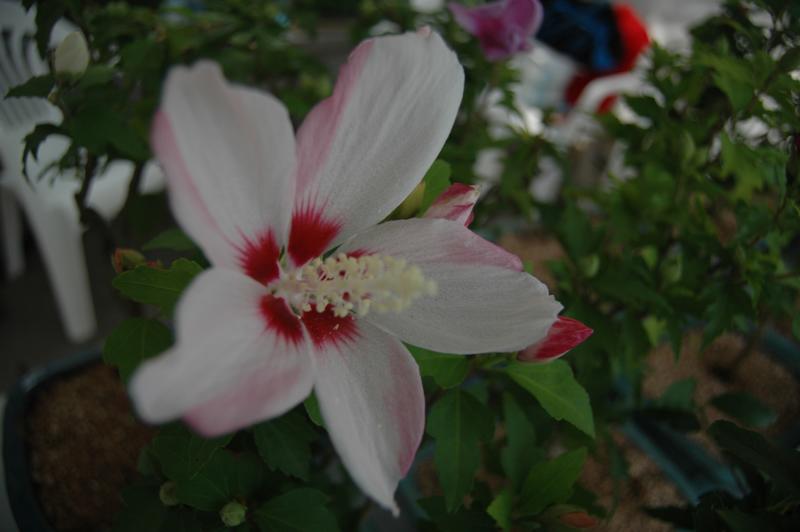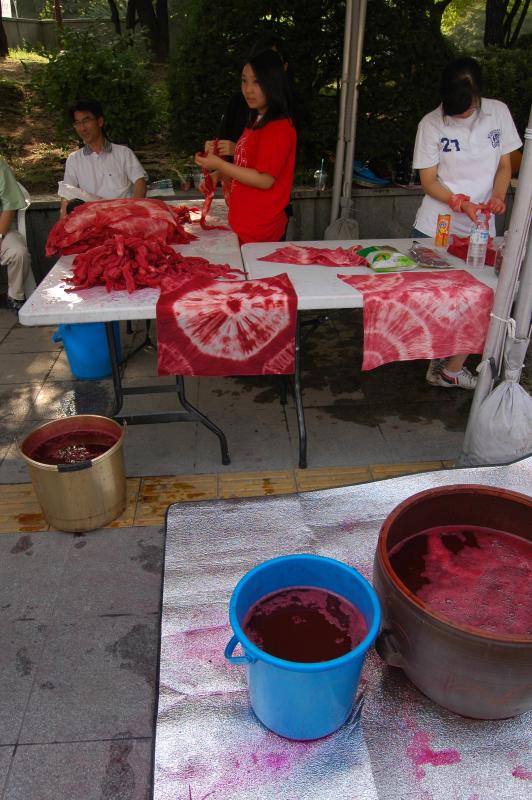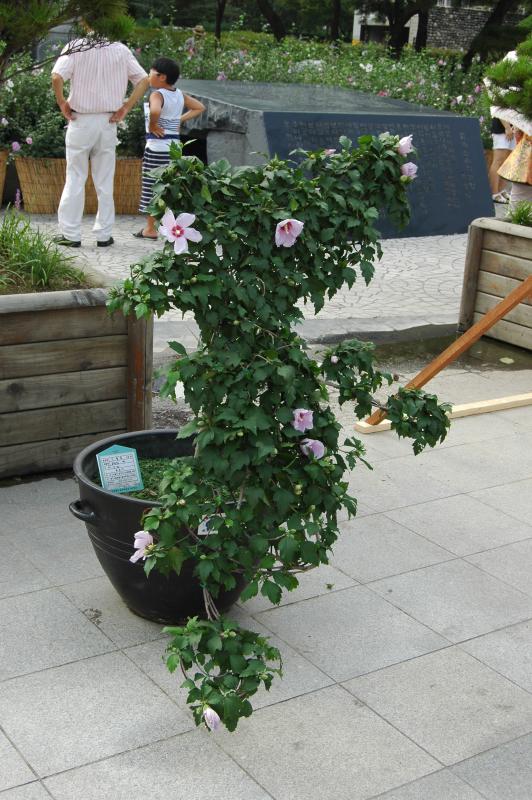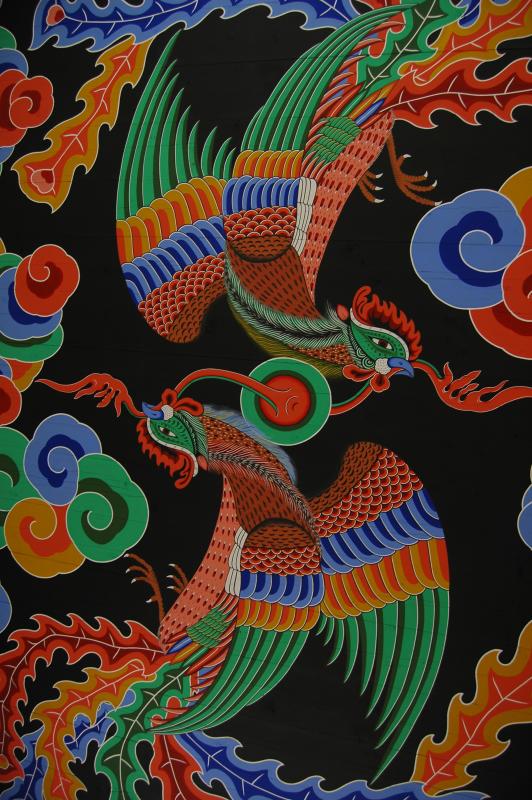
Between where I stand and the mountain on the horizon is Gwanghwamun. The front gate to Gyeongbokgung has been under renovation since 2006, but the wait is over - and with it is the wait to appreciate Korea's foremost palace in its entirety.
The event also celebrated Liberation Day (also called V-J day if you're from the UK), or August 15th as it's known elsewhere. If you're from the US, you might be familiar with September 2nd as 'V-J day'; if you're studying holidays you don't get off of work or school, check out this Wikipedia article for more information.

Also happening near Gwanghwamun (the front gate) and Gyeongbokgung (the palace) was a Mugunghwa festival. English speakers may know Korea's national flower as the Rose of Sharon or the Hibiscus syricus L. if you speak the language of science.

Along the sidewalk were ample opportunities to take part in a number of craft programs. Above, a kid uses a pressed mugunghwa flower to decorate a fan.

Tie-dying, anyone? A few thousand won separated you from owning your very own tie-dyed handkerchief / sweat rag. Especially useful during those hot days.

More than a few plants were created in the form of other things. The one did a passable job of looking like Korea. Think of the east and south branches as the islands (Jeju to the south, Ulleungdo and Dokdo to the right).

Oh yeah - the gate! First constructed in 1395, it has experienced its own share of Korea's ups and downs. After being destroyed during the Japanese invasion of 1592, reconstructed in 1867, torn down during the Japanese occupation in 1926, moved to the east side of the palace, destroyed during the Korean war in 1950, rebuilt incorrectly in 1963, renovated starting in 2006, and finally finished for the world to see. If you're interested in more history, see the Wikipedia page for Gwanghwamun or Robert Koehler's excellent review.

The ceiling of one of the three entrances. Each ceiling is different - not pictured are turtles and horses on the other two.

Me getting fancy with the camera - the light during the daytime seemed relatively harsh, but transformed into black and white (and a little selective blur), it looks a bit more interesting.
The palace offered free admission, which brought part of the huge crowd in for a fresh look around - one without 'under construction' signs in the way of beauty.

Admiral Yi Sun Shin standing guard over Gwanghwamun Plaza and the lit-up fountains.

Being one of Seoul's foremost tourist attractions, it's going to be lit up for the crowd to see.
If you're living in Korea and it's been awhile since you've seen Gyeongbokgung, make it a point to visit soon. Unlike most sights that can be seen and reasonably understood in one visit, Gyeongbokgung has more to see now than it ever has before. It really does look different without all the 'under construction' signs and wraps around.
Ratings (out of 5 taeguks):
Ease to arrive:
Foreigner-friendly:
Convenience facilities:
Worth the visit:
Directions to Gwanghwamun: Take line 5 of the Seoul subway system to the Gwanghwamun station. Take exit 2 to street level, then walk straight down the plaza to the gate and palace. You can also reach the palace via Gyeongbokgung station (line 3, exit 5). You'll emerge on the side of the palace - look right to see the shiny new gate, or left to enjoy the palace.
This post was originally published on my blog,Chris in South Korea. If you are reading this on another website and there is no linkback or credit given, you are reading an UNAUTHORIZED FEED.






 RSS Feed
RSS Feed
Recent comments